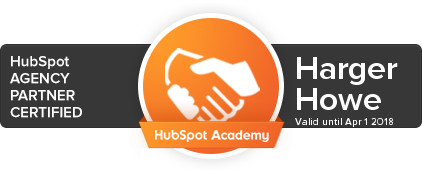Too many times we receive feedback from companies saying they aren’t seeing enough applications from jobs they posted. Curiously enough though, when we post their roles, the applies come flooding in. The truth is, most people are not aware of some key things that must be in a job ad / posting if they expect a candidate to move from simply interested to ready to apply.
Today, we are going to give you some tips on how to get more applications and therefore, make more hires.
Use Clear Titles
We’ve written about this previously, but we cannot emphasize enough how important it is to optimize your ads for SEO and general comprehension. Do not seek out a Robot Wizard Overlord when you are looking for a Data Analyst or IT Manager. No. Just…no. Instead, use the search term that candidates are familiar with and save the fun and funky for your body copy (but still reiterate the correct term there as well). The cool slang may sound neat, but no one know what you’re trying to say! Here are some common issues with using “cool” terms:
- Applicants misunderstand the job responsibilities.
- Unqualified candidates are more apt to apply for a job that sounds “neat."
- Some qualified candidates will never find your posting as they use completely different, more relevant search terms.
Cut it Down
We know it’s important to give candidates the full breadth of what is expected in a role, but some of that needs to happen during the interview. We promise you that no one is reading a multiple page description…According to a recent SHRM article, “Consultants say that effective job ads run from 600-900 words.”
Long, tedious job descriptions are not the way to go. Cut it back and reap the benefits! And while you’re at it…
Consider Your Formatting
We’re sure that you’ve heard the old adage “silence is golden,” but have you heard ours? At Harger Howe Advertising, we believe that “white space is golden.” Why? Because it gives candidates a mental “breath.” Make your job postings easy to digest by including the right formatting. Some things to include are:
- Headers
- Sub Headers
- Bulleted Lists
These elements will help job seekers read the description quickly and efficiently.
Include the Important Things
We know the job responsibilities and requirements section is key, but let’s be honest…candidates pick jobs based on more than those things. In fact, some of the main reasons people seek out new roles is a need for a sense of purpose, better benefits and cultural fit. Promote those aspects of your company so that candidates will know what they can expect from you!
However, you must stick to the facts. If your office isn’t a fun place, don’t say it is. The key is to always be as transparent and honest as possible. There are many candidates who are looking for your job, so there’s no need to embellish.
Get with Google
Google is one of the major forces in the modern world. We must all bend the knee at some point. Part of that means optimizing your roles to show up on Google for Jobs. Per another SHRM article, you can do this by following these directions:
“The minimum data Google requires is:
- Name of the organization posting the job.
- Title of the job (not the title of the posting). For example, ‘Software Engineer’ or ‘Barista’ and not ‘Warehouse Jobs’ or ‘Retail Hiring!’
- The job description, including job responsibilities, qualifications, skills, working hours, education and experience requirements. ‘The job description can't be the same as the job title, must be formatted in HTML and have one paragraph at a minimum,’ Cotton said.
- The posting date for the job.
- Location information for the job including full address. The more location information provided the likelier it will get selected by Google's algorithm, Cotton said.
- The expiration date for the job posting, if applicable.
Optional but recommended data requirements are:
- The company's unique identifier for the job, usually the requisition number from the ATS.
- The type of employment—whether full-time, part-time or contractor, etc.
- Base salary information in either a lump sum or range, including currency type and frequency of pay period.”
--
We hope this helps you go forth and write incredible, informative and most importantly, effective job descriptions for your recruitment advertising. However, if you need some help…feel free to contact us!











